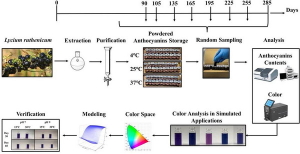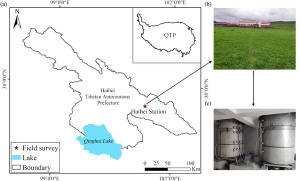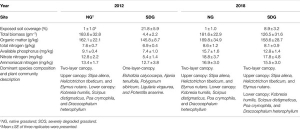The plant secondary compound swainsonine reshapes gut microbiota in plateau pikas (Ochotona curzoniae)

December 22, 2021 Plants produce various plant secondary compounds (PSCs) to deter the foraging of herbivorous mammals. However, little is known about whether PSCs can reshape gut microbiota and promote gut homeostasis of hosts. Using ...
Moderate Grazing Increases Water Use Efficiency for Environmental Health in Alpine Meadows of the Tibetan Plateau

December 22, 2021 Water use efficiency is an important indicator of drought tolerance in plants. The response of the water use efficiency to different grazing intensities and adaptive mechanisms in alpine meadows remains unclear. To un...
Improved colorimetric analysis for subtle changes of powdered anthocyanins extracted from Lycium ruthenicum Murr.

December 21, 2021 Anthocyanins of Lycium ruthenicum (LR) are valuable, whereas stabilities, especially colour stabilities, constrain development. This study investigates stored temperature effects on the stability of powdered anthocyan...
Evaluation of actual evapotranspiration measured by large-scale weighing lysimeters in a humid alpine meadow, northeastern Qinghai-Tibetan Plateau

December 21, 2021 The accurate estimation of evapotranspiration (ET) is essential for assessing water availability and requirements of regional-scale terrestrial ecosystems, and for understanding the hydrological cycle in alpine ecosys...
Restoration of Degraded Grassland Significantly Improves Water Storage in Alpine Grasslands in the Qinghai-Tibet Plateau

December 21, 2021 Alpine grassland has very important water conservation function. Grassland degradation seriously affects the water conservation function; moreover, there is little understanding of the change of water state during gra...
